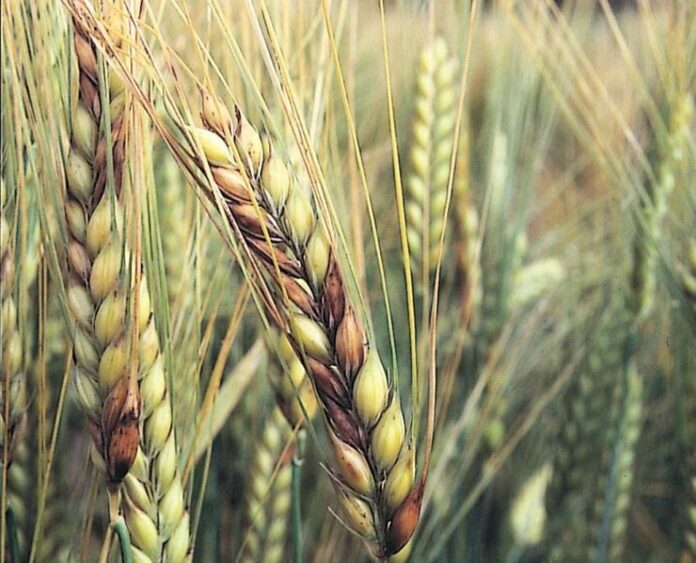Fusarium graminearum, a notorious fungal pathogen, has grabbed headlines in June 2025 due to its alarming classification as a potential agroterrorism weapon. This destructive fungus, responsible for billions in economic losses annually, wreaks havoc on cereal crops like wheat, barley, maize, and rice. Recent developments have thrust it into the spotlight, not just for its agricultural devastation but for its potential misuse in bioterrorism. Two Chinese researchers were arrested in the U.S. for allegedly smuggling this dangerous fungus, raising concerns about its implications for food security and global health. Let’s dive into why this pathogen is so concerning and what’s being done about it.
The Devastating Impact of Fusarium Graminearum
This fungus causes Fusarium head blight (FHB), a disease that decimates cereal crops. It infects the heads of plants, leading to shriveled, discolored grains unfit for consumption. The economic toll is staggering, with billions lost each year due to reduced yields and contaminated harvests. Beyond financial losses, the fungus produces mycotoxins like deoxynivalenol (DON), which pose serious health risks. These toxins can cause vomiting, liver damage, and reproductive issues in humans and livestock if contaminated grains enter the food supply. Farmers face a double blow: lower crop yields and the costly rejection of tainted produce.
The pathogen thrives in warm, humid conditions, making it a persistent threat in many agricultural regions. Its ability to spread rapidly through spores carried by wind or contaminated seeds exacerbates the problem. In Western Canada, for instance, FHB has become the most destructive cereal crop disease, with significant outbreaks traced back to infected seed imports. The fungus’s resilience and adaptability make it a formidable foe for farmers and researchers alike.
A New Concern: Agroterrorism Potential
Recent news has elevated Fusarium graminearum from a farming nuisance to a national security concern. In early June 2025, the FBI arrested two Chinese nationals, Yunqing Jian and Zunyong Liu, for allegedly smuggling the fungus into the U.S. Jian, a researcher at the University of Michigan, and Liu, her boyfriend, planned to study the pathogen in a university lab. Authorities discovered the fungus in Liu’s backpack at Detroit Metropolitan Airport, prompting charges of conspiracy, smuggling, false statements, and visa fraud. The FBI labeled the fungus a “potential agroterrorism weapon” due to its ability to devastate crops and disrupt food supplies.
This incident has sparked debates about the risks of unregulated research. While studying Fusarium graminearum could lead to breakthroughs in crop protection, its potential as a biological weapon raises red flags. A deliberate release could cripple agricultural economies, contaminate food chains, and cause widespread health issues. The arrests highlight the need for stricter oversight of biological materials and international research collaborations.
Advances in Combating Fusarium Graminearum
Despite its dangers, scientists are making strides in fighting this fungal menace. A June 2025 study from Rothamsted Research revealed a specialized protein used by Fusarium graminearum to weaken plant immune defenses. This discovery could pave the way for bio-engineered, disease-resistant grains, offering hope to farmers battling FHB. Researchers are also exploring natural remedies, such as pomegranate peel extract, which shows promise in reducing the fungus’s mycotoxin production. These innovations could help mitigate the pathogen’s impact on global agriculture.
Efforts to control the fungus extend beyond the lab. Farmers are adopting integrated management strategies, including:
- Crop rotation: Planting non-host crops to break the fungus’s lifecycle.
- Resistant varieties: Using wheat and barley breeds with genetic resistance to FHB.
- Fungicides: Applying targeted treatments to reduce fungal spread.
- Seed testing: Screening seeds to prevent the introduction of infected materials.
These practices, combined with ongoing research, aim to curb the fungus’s destructive reach and protect food security.
The Road Ahead for Food Security
The recent smuggling incident underscores the urgency of addressing Fusarium graminearum’s dual threat as both a natural and weaponized pathogen. Governments and institutions must balance the pursuit of scientific knowledge with the need to safeguard agriculture. Enhanced regulations, international cooperation, and public awareness are critical to preventing misuse while supporting research for solutions. As climate change creates more favorable conditions for fungal diseases, proactive measures will be essential to protect crops and ensure stable food supplies.
Stay informed about agricultural threats like Fusarium graminearum and support efforts to protect our food systems. Follow updates from trusted agricultural research institutions and advocate for policies that prioritize food security.
